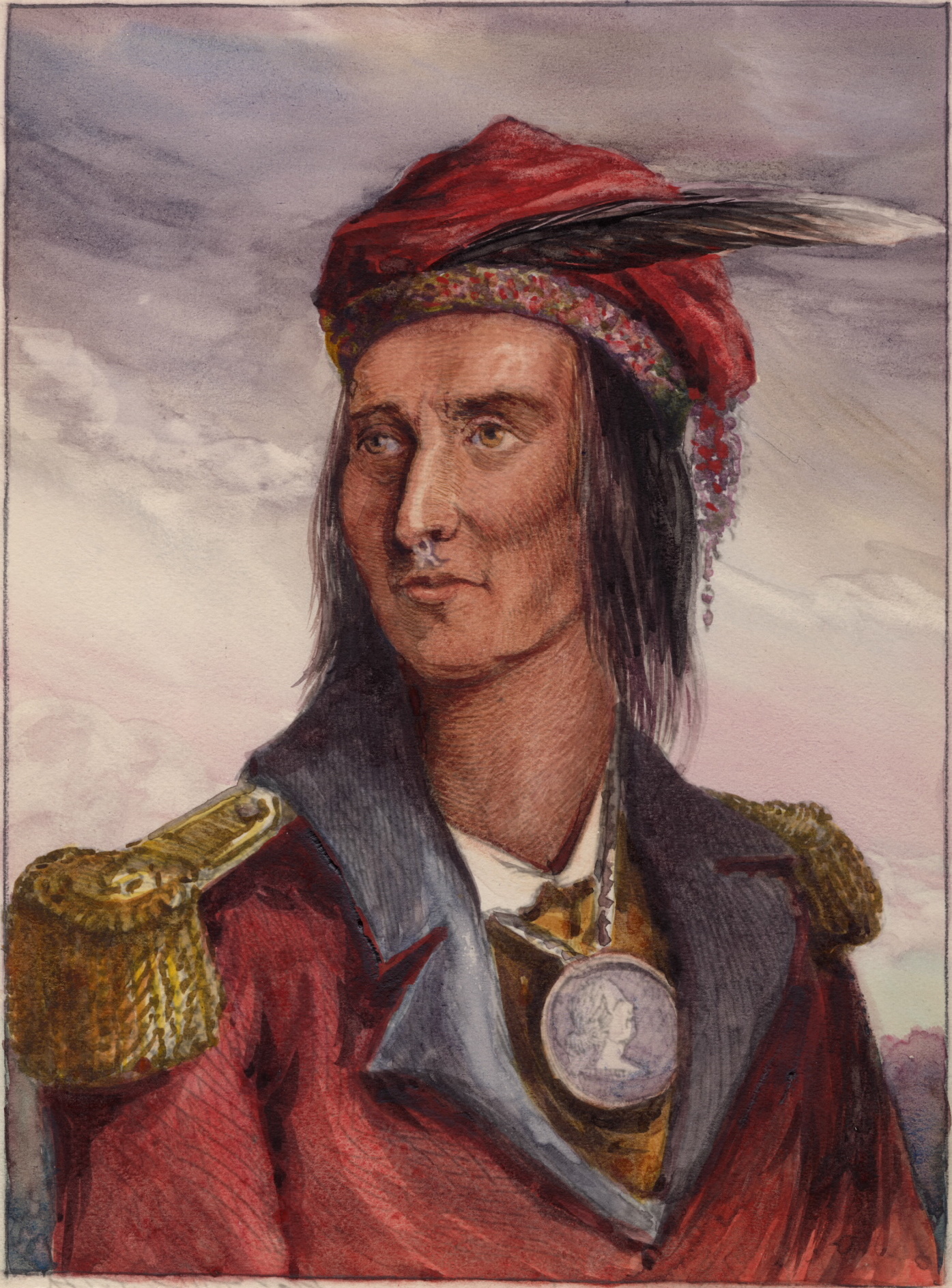As with
After the Mayflower, I've read books about the events of
Tecumseh's Vision. But the second episode of the PBS series
We Shall Remain really brought the story alive for me. Again, it was a thought-provoker and anyone interested in Native history should see it.
For a fuller account of Tecumseh, see such postings as:
TecumsehTecumseh's WarTecumseh's ConfederacyHere are some bits and pieces of Tecumseh's backstory and my thoughts on them:
Tecumseh was a "man who led a revolution of young men," according to one historian. "Young men who were tired of the accommodationist stance of their elders."Good point. I wonder how often a generation gap played a role in the Indians' response to the Euro-Americans. We've often seen depictions of wise elders counseling caution and patience and young warriors demanding immediate action, but how real was this? And which approach worked better in the long run?
When Tecumseh walked into room, according to a historian, people would stop talking and stare at him. He had such an aura of leadership and respect that even his enemies admired him."Tecumseh," pronounced Te-cum-theh by some, meant "shooting star" or "crouching panther" according to Wikipedia. A Shawnee in Tecumseh's Vision notes that the Shawnee considered falling stars to be panthers jumping among the stars."Lalawethika," the name of Tecumseh's brother, meant "the noise maker" according to a historian or "one with open mouth" according to Wikipedia. The historian says we'd translate this as "loudmouth."In 1801 Thomas Jefferson wrote:The American settlements will gradually circumscribe and approach the Indians, who will in time either incorporate with us as citizens of the United States, or remove beyond the Mississippi.There you have it: the "great" Founding Father's statement of genocidal intent. Unless the Indians commit cultural suicide, we'll commit cultural homicide. We'll push them into the badlands, into the desert, into the sea until they're gone.
The Americans pushed the so-called "factory system" on the Indians. They established forts throughout the Ohio territory to promote a trade system of furs for goods. This eventually made Indians into debtors of the US. They could pay their debts only by ceding land.After the Mayflower also mentioned an English effort to force Indians into debt. Hmm. People haven't reported a lot on the role of economic pressure in subjugating Indians. There's probably much more to be said about this subject.
The influx of settlers kept the Indians on a constant war footing. The loss of Indian men led to broken homes and communities. Having twice as many women as men put kinship systems under stress. Diseases flourished and spread under these conditions.No wonder the Indians experienced feelings of despair and turned to alcohol for relief. Yet
genocide apologists still claim that
Western civilization was and is inherently
"superior"? The only superiority I see here is the superiority of numbers. The greedy land-grabbers were like an unstoppable plague of locusts.
For more on the subject, see
Native Documentaries and News.



Rob asked: "I wonder how often a generation gap played a role in the Indians' response to the Euro-Americans. We've often seen depictions of wise elders counseling caution and patience and young warriors demanding immediate action, but how real was it"
ReplyDeleteI've read several books and accounts of the Dakota (Souix) Uprising in 1862 in Minnesota, and the exact sort of generation gap you describe was a major part of it what was going on.
"There you have it: the "great" Founding Father's statement of genocidal intent."
ReplyDeleteWrong that's just one man's statement unless they all made similiar statements you're using a fault guilt by association argument.
I read Founding Father's as "just one man". It was not a plural designation.
ReplyDelete